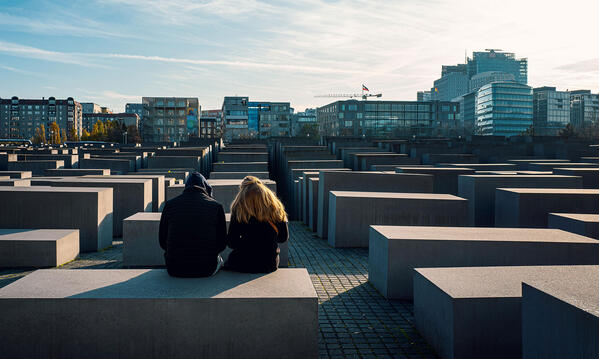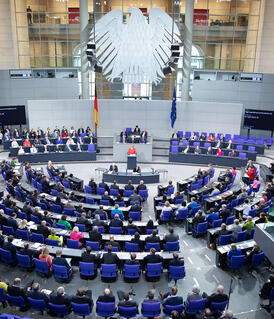Vibrant Culture of Remembrance

Addressing war and tyranny, ideologically motivated crimes and political injustice in the 20th century, not to mention commemorating the victims of persecution, play an important role in the culture of remembrance in the Federal Republic of Germany. Preserving eye-witness reports by persons who actually experienced the events is the key element in a culture of remembrance destined to make certain that coming generations are conscious of the crimes committed by the Nazis.
The numerous memorials to the various groups of victims all over Germany are also part of this vibrant culture of remembrance. In central Berlin Berlin Once a year, during the Berlinale film festival, the world of the silver screen focuses its attention on Berlin. And the city’s inhabitants are used to global interest. After all, the people of Berlin have lived in a capital city since 1458. However, there is also a shady side to the city’s history… Read more › , for example, the Memorial to the Murdered Jews of Europe is a memorial to the six million Jewish victims of the Holocaust.
How Germany remembers war, resistance and dictatorship
In May 2025, Germany commemorated the end of the Second World War and thus the end of the Nazi dictatorship 80 years earlier. In October 2025, the country celebrated 35 years of German unity. During the anniversary years of 2014 and 2015, which marked 100 years since the beginning of the First World War and the 25th anniversary of the Fall of the Berlin Berlin Once a year, during the Berlinale film festival, the world of the silver screen focuses its attention on Berlin. And the city’s inhabitants are used to global interest. After all, the people of Berlin have lived in a capital city since 1458. However, there is also a shady side to the city’s history… Read more › Wall, the commemorations were marked above all by a sense of gratitude. They acknowledged the debt owed to the Allied coalition for liberating Germany in 1945 and also the opportunity for reconstruction and reunification in 1990. There was also gratitude to those Holocaust survivors who bore witness to the crimes and were willing to be reconciled with democratic Germany after the Second World War.
Where can information about the GDR system be found in Germany?
Germany also intends to keep the memory alive of the communist dictatorship during the periods of the Soviet occupation zone (1945–1949) and the German Democratic Republic (GDR) in East Germany (1949–1990) for those generations who did not experience a divided Germany and the GDR system. At the Stasi Records Agency, files continued to be examined, sorted and made accessible to the people concerned, as well as to scholars. These tasks, and responsibility for the documents, were transferred in mid-2021 to the Federal Archive. A permanent exhibition in the building of the former headquarters of the Ministry of State Security of the German Democratic Republic (Stasi) gives fascinating insights into how the Stasi would spy on, control and intimidate the population, and the equipment they used to do so.
How does Germany commemorate the resistance to the Nazi dictatorship?
The German Resistance Centre in the “Bendlerblock” in Berlin Berlin Once a year, during the Berlinale film festival, the world of the silver screen focuses its attention on Berlin. And the city’s inhabitants are used to global interest. After all, the people of Berlin have lived in a capital city since 1458. However, there is also a shady side to the city’s history… Read more › ’s Mitte district commemorates those who opposed Nazi dictatorship. It stands on the historic site of the failed coup attempt undertaken by a group led by Graf Stauffenberg on 20 July 1944. The memorial centre documents in impressive form how individuals and groups resisted the Nazi dictatorship between 1933 and 1945 and took advantage of any scope for action available to them.
How Germany keeps history alive
In Germany, a culture of remembrance refers to the way society engages critically with the past, especially the crimes of the Nazis and the injustice of the GDR dictatorship.
It preserves historical truth, strengthens democratic values and counters extremist tendencies.
There are numerous memorial sites, museums, monuments and former prison and concentration camps that provide information, engage critically with war and tyranny, ideologically motivated crimes and political injustice, and commemorate their victims.
The culture of remembrance in Germany is supported by state institutions such as the federal, state and municipal governments, as well as by foundations, associations, schools and engaged citizens.


